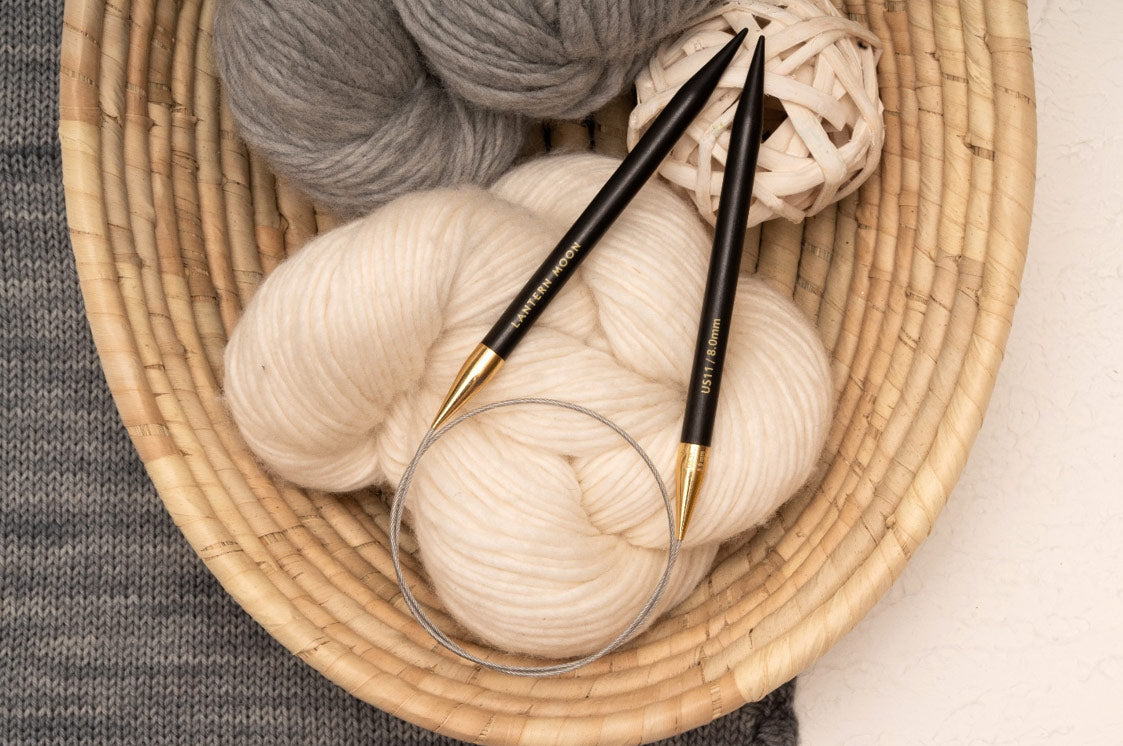
Knitting in the round opens a world of possibilities for creating seamless garments, creative accessories, and beautiful and unique designs. Whether you're a novice or an experienced knitter, understanding the essential technique of casting on for knitting in the round is crucial. For beginners, you have tried a lot of flat knitting and have yet to dare to make a round knitting project. This blog is for you guys. You can add shape to your projects by increasing or decreasing stitches. Experts say that you should cast on double the stitches as you require to achieve the final length. In this comprehensive guide, we will explore various methods of casting on, delve into the advantages and drawbacks of each technique, and provide step-by-step instructions to help you know this fundamental skill. With a good knowledge of casting on, you'll be ready to embark on exciting knitting projects in the round.
The Double-Pointed Needles Method
Basic approach of casting on for knitting in the round is using double-pointed needles (DPNs). This method is beneficial for small, cylindrical projects like socks or mittens. Begin by dividing the stitches evenly among three or four DPNs, with each needle holding an equal number of stitches. You can either start with an extra stitch or distribute the stitches across the needles using the "magic cast-on" technique to prevent gaps. As you work your way around, the unused needles serve as placeholders. You can create seamless, circular knitting by continuously knitting with the active needle and rotating the project.
The Circular Needle with a Magic Loop Variation
A variation of the Magic Loop method involves using a circular needle with a shorter cable. This approach is advantageous for larger projects, such as sweaters or blankets. Instead of folding the needle in half, divide the stitches into two separate cable sections, leaving a small gap between them. Slide the stitches on one area to the needle tip, leaving the other empty. As you work through the stitches, shift them from one section to another, creating a seamless knitting experience. This variation provides stability and flexibility, making it easier to manage larger projects without needing DPNs.
The Magic Loop Method: One popular method for casting on in the round is the Magic Loop method. This technique involves using a long circular needle with a flexible cable. It lets you quickly knit small circular boundaries, such as hat brims or sleeves. To begin, cast the required number of stitches onto the circular needle, leaving a long tail at the beginning. Fold the needle in half so the stitches are divided evenly, with half on one side and the other half on the cable. Pull the cord through the middle, creating a loop. You can effortlessly knit in the round by working the stitches from one side of the loop at a time.
The Provisional Cast-On: The provisional cast-on method is ideal for projects requiring grafting, like infinity scarves or cowls. This technique involves temporary casting on stitches using waste yarn. Once you have the desired number of stitches, you can switch to your working yarn. After knitting in the round, the provisional stitches can be straightened out, exposing live stitches that can be grafted. The provisional cast-on offers a seamless transition between two sections of knitting.
Essential Things To Do:
Once you have cast on your desired number of stitches, you can join them in the round by carefully placing a stitch marker to mark the beginning of the round. Be careful not to twist your stitches when joining, as this will result in a twisted project. Always double-check that all your stitches face the same direction on your circular needle before you begin knitting.
After joining the round, you can start working on your project, following the pattern instructions or your creative ideas. Whether you’re working on a small accessory or a larger garment, knitting in the round offers the advantage of uninterrupted crafting without the need for later seaming.
Remember to monitor your tension and be aware of changes in stitch count or pattern instructions as you work in the round. With practice, casting on for knitting in the round will become second nature, opening up a world of possibilities for your knitting projects.
Mastering the art of casting on for knitting in the round is essential for any knitter looking to expand their collection. Whether you choose the Magic Loop method, double-pointed needles, or another technique, practice, and patience are essential keys. By understanding the various ways and sharpening your skills, you can create beautiful, seamless knitted pieces without the hassle of seaming. So grab your needles, choose your favorite technique, and embark on a world of endless possibilities.
